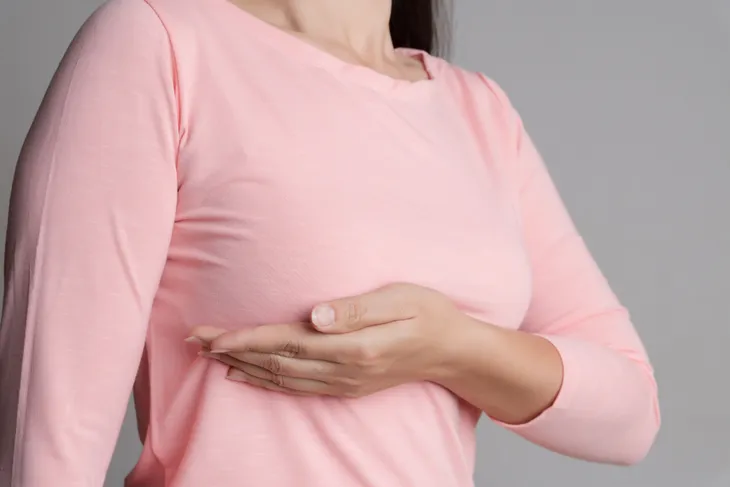It’s a pretty scary feeling to be taking a shower when you feel something in your breast that wasn’t there before. Of course, if you detect a lump or a strange change in your breasts, you should consult with your doctor as soon as possible. However, don’t assume the worst. That lump, strange texture or redness around your nipple isn’t automatically breast cancer.
No, it may be one of these 8 non-cancerous (or benign) breast tumors, lumps, or conditions…
Fibrosis
Fibrosis results in changes in the breast affected by hormones—such as menopause or a monthly menstrual period. Fibrosis creates abnormal firm areas among the connective tissues in your breasts, like tenderness, nipple discharge, tenderness and pain, thickening skin, and lumps. Don’t panic, fibrosis is typically harmless and rarely requires surgery.
Breast Cysts
Often mistaken for fibrosis, breasts cysts are often painful, fluid-filled sacs that typically come and go and worsen with hormonal changes (i.e., your period). When detected, you may notice a smooth surface, much like a small berry, that moves under your fingers. Cysts need to be confirmed by physical exam alone, followed by an ultrasound or mammogram (or both), after which your doctor will take fluid from the cyst via biopsy by inserting a thin, hollow needle. Cysts typically come and go, and those that aren’t obtrusive can be left alone and monitored regularly with a mammogram and regular breast exams.
Duct Ectasia
If you notice symptoms like breast redness, a green-black thick discharge from your nipple, accompanied by breast pain or tenderness around the nipple area, you may have a case of Duct Ectasia. This condition strikes women in their 40s to 50s, and can result in small, hard, benign breast lumps. Any breast redness, discharge, or hardness should be biopsied to ensure no cancer is present.
Traumatic Fat Necrosis
Fat Necrosis most typically follows a breast injury or trauma. It can cause a fluid-filled oil cyst or inner lumpiness if breast tissue heals inadequately and causes rough scar tissue to form. It may also cause causes fat to form in round, firm, hard, and most often painless lumps. A biopsy will confirm the presence of a harmless oil cyst as well as the presence of any benign scar tissue.
Mastitis
Mastitis most commonly occurs in breastfeeding moms. This breast infection causes abscesses, breast redness, and skin that are often warm and tender to the touch. It’s vital that breast mastitis is treated—both for the safety of mom and her breastfeeding baby. If antibiotics don’t do the trick, your doctor may use a needle to drain the painful abscess.
Benign Breast Tumors
Benign breast tumors can be the scariest to locate in your breast. However, these are non-cancerous and abnormal breast cells that form a solid lump. You may also feel tenderness and some pain when you press on a benign breast lump, but most don’t cause any sensation. If the tumor is large it may change the size and shape of your breast.
Intraductal Papillomas
More often painful are benign breast tumors found in the area of the nipple. They form within the tissues of the milk ducts. These intraductal papillomas are made up of a combination of gland and fibrous tissue, and blood vessels. They may be tender to the touch or even when left alone, and may cause a sticky, thick, and bloody discharge from the nipple. Larger milk duct tumors may be extremely painful and your doctor may recommend surgery to remove them.
Sclerosing Adenosis
This condition causes small breast lumps (nodules) or cysts to cluster and form a larger, painful, benign breast lump. Scelrosing Adenosis is the result of enlarged lobules, or in other words when extra tissue develops within the small portions of the milk-producing glands. These non-cancerous tumors can cause annoying and recurring pain that tends to worsen during the menstrual cycle.











